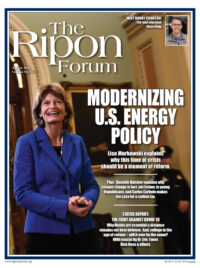
Congress has authorized more than $3.6 trillion of relief spending for individuals, businesses, and state governments. About half has been spent as of the beginning of June.
Much of the aid to date served as a floor for the economy to rest on while “non-essential” functions closed or operated at reduced capacity. The new aid and assistance available through existing programs, such as unemployment insurance, serve as temporary measures to allow public health officials to control the coronavirus pandemic.
The economic recovery will ultimately be dictated by our ability and willingness to return to work, which necessitates an appropriately scaled reopening and public cooperation with health measures. The trillions in pandemic spending have direct and immediate benefits to the recipients, but federal aid cannot keep a shuttered economy on life support forever. The spending will ultimately distort incentives, which could be costly during the recovery.
To keep people connected to their employers and businesses afloat, Congress created several new programs, including the popular Paycheck Protection Program, a loan program for small businesses to keep their payrolls up. However, workers face different incentives. Under Congress’s expanded unemployment benefits, through the end of July it’s more profitable not to work than to work for as many as 3 in 4 workers.
The economic recovery will ultimately be dictated by our ability and willingness to return to work.
If extended, the additional $600 weekly unemployment benefit could create a more sluggish labor market, deepening the recession and delaying the recovery by slowing workers return to employment. Businesses receiving loans and other government subsidies, such as direct grants to the airline industry and other loans to businesses, will face new government restrictions and public pressure against changing employment levels or other decisions necessary to retool for the post-crisis economy.
Following state reopenings, employment bounced back faster than most economists thought possible. In May and June, U.S. businesses brought back 7.3 million jobs, making up about a quarter of lost employment.
Amid continued public health uncertainties, it may be necessary for Congress to provide more gradual off-ramps to new and expanded programs, like unemployment, but safely reopening commercial society must continue to be the focus.
As the economy transitions from the safety net that allowed states to shutter large swaths of their economies, many will call for new policies designed to restart ailing industries and jumpstart employment. Past attempts at economic stimulus show that governments can’t spend their way into economic recovery.
Stimulus spending is more than just a waste of taxpayer dollars; stimulus destroys jobs and shrinks private sector growth. The 2009 stimulus channeled over $500 million to Solyndra, only to have the solar manufacturer go bankrupt. Smaller projects, like a Nevada biomass electricity plant, shut its doors after federal funding stopped, and the “cash for clunkers” program, to subsidized new vehicle purchases, simply changed when people bought cars, not how many they purchased.
The Great Recession policies demonstrated the inability of government spending programs to boost private activity or increase total output. The private sector, not Washington, must lead the economic recovery.
Spending authorized by Congress to date is projected to increase debt-to-GDP levels above 100 percent by the end of 2020. Higher levels of public spending and debt can crowd out private investment directly, and if spending isn’t quickly brought under control, it means tax increases on every American are around the corner.
Past attempts at economic stimulus show that governments can’t spend their way into economic recovery.
The House of Representatives passed an additional $3.4 trillion stimulus bill in May and another $1.5 trillion infrastructure bill at the end of June. If passed into law, these “stimulus” bills would have the lasting legacy of larger debts, higher taxes, and slower economic recovery.
The trade-off of government spending is, at its core, a choice between private activity and government activity. In the depths of the government-imposed shutdowns, federal programs largely shifted private payrolls to government. Continuing or expanding these programs as part of the economic reopening will not create additional growth, but depress it instead.
If Congress determines more aid for individuals is necessary, it should be targeted to those who need it most. Some 142 million Americans are fortunate enough to have jobs still. A temporary partial federal match to unemployment benefits after the $600 bonus benefits expire on July 31st would be much better targeted than sending checks to every American or cutting payroll taxes for individuals who still have jobs.
Similarly, if Congress is going to extend additional aid to businesses, lawmakers should do it through existing programs, targeting the aid to those businesses hit hardest by closure orders and simplifying program rules for those who do need the help.
Federal spending, even if well designed, will never be an adequate substitute for private-sector commerce. Temporary, targeted programs that provide timely aid to those in need helped soften the most painful consequences of the coronavirus shutdown.
Recent employment rebounds show the possibility of a quicker recovery amid loosening economic restrictions and the willingness of Americans to return to work, restaurants, and stores. Safely returning to commercial and community life is the surest way to ensure a healthy recovery.
Adam N. Michel is a senior policy analyst in The Heritage Foundation’s Roe Institute of Economic Policy Studies.




